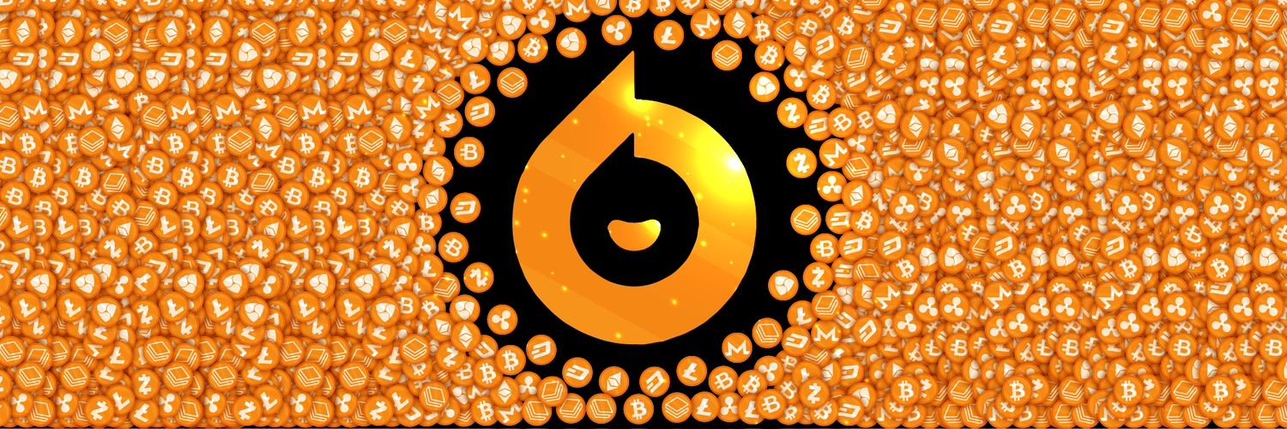
Tether USDt priceUSDT
USDT/USD price calculator
Live Tether USDt price today in USD
Do you think the price of Tether USDt will rise or fall today?
Tether USDt market Info
About Tether USDt (USDT)
What Is Tether?
Tether (USDT) is a type of cryptocurrency known as a stablecoin. It is designed to maintain a steady value against the U.S. dollar, aiming to combine the benefits of blockchain technology with the relative stability of fiat currencies. This design intends to reduce the volatility typically associated with cryptocurrencies like Bitcoin and Ethereum.
The concept behind Tether is simple: for every unit of Tether in circulation, there should be one U.S. dollar held in reserve by Tether Ltd., the company behind USDT. This 1:1 peg to the U.S. dollar means that theoretically, any holder of Tether should be able to redeem their USDT for an equivalent amount of U.S. dollars.
In June 2023, the stability of Tether's USDT experienced a slight depeg due to the Curve’s 3Pool liquidity imbalance. Even though the price dropped to as low as US$0.996 at that time, USDT price recovered to US$0.999 later in the day.
Resources
Original Whitepaper: https://assets.ctfassets.net/vyse88cgwfbl/5UWgHMvz071t2Cq5yTw5vi/c9798ea8db99311bf90ebe0810938b01/TetherWhitePaper.pdf
Official website: https://tether.to/
How Does Tether Work?
Initially launched on the Bitcoin blockchain, Tether has since evolved significantly. It now exists as digital tokens on an impressive list of 12 major blockchains, including but not limited to Algorand, Avalanche, Bitcoin Cash’s Simple Ledger Protocol (SLP), Ethereum, EOS, Liquid Network, Omni, Polygon, Tezos, Tron, Solana and Statemine.
The Blockchain Ledger and Tether's Centralization
Like its cryptocurrency counterparts, all Tether transactions are transparently recorded on a blockchain. This decentralized ledger meticulously tracks all transaction history and is publicly accessible. However, it's crucial to note that Tether differentiates itself by being a centralized stablecoin. Its supply and operations are exclusively managed by Tether Ltd.
By providing a reliable and transparent stablecoin option, Tether continues to play an important role in the broader cryptocurrency ecosystem.
What Determines Tether's Price?
Understanding what determines the current Tether price is crucial for anyone involved in the cryptocurrency market. Tether (USDT), often referred to as a stablecoin, aims to maintain a 1:1 peg with the U.S. dollar. This 1:1 peg is theoretically backed by reserves held by Tether Ltd., the company responsible for USDT.
Factors Influencing Tether Price Stability
However, the stability of Tether's 1:1 peg can be influenced by a multitude of factors including market sentiment, liquidity imbalances, and the overall health of the cryptocurrency ecosystem. For instance, in June 2023, the Tether USD price experienced a slight depeg due to Curve’s 3Pool liquidity imbalance. The USDT price dropped to as low as $0.996 before recovering, affecting Tether's price history.
The Importance of Trust and Confidence
Tether price data often serves as an indicator of the level of trust market participants have in the stablecoin. When Tether maintains its 1:1 peg, it signifies a balanced state of inflows and outflows. This also indicates confidence in the company's ability to maintain its reserves, impacting Tether price predictions. However, any change in the Tether coin price, even a slight one, can trigger market reactions.
Market Reactions to Tether Price Changes
For example, a depegging event can lead to increased Tether trading volumes as investors seek to capitalize on arbitrage opportunities or move their assets to other stablecoins or fiat currencies. On-chain metrics such as trading volume and token circulation can provide valuable insights into how the market is responding to changes in Tether's price.
Regulatory Scrutiny and Tether Price Analysis
Moreover, the Tether to USD price can also be influenced by regulatory scrutiny and the company's transparency regarding its reserves. Any discrepancies or uncertainties can lead to Tether price fluctuations. Despite occasional depegs, Tether has managed to maintain its dominant position in the stablecoin market. This suggests that its underlying blockchain technology and the broader cryptocurrency ecosystem continue to support its value proposition.
The Need for Constant Monitoring
Therefore, keeping an eye on real-time Tether price, regulatory updates, and market sentiment can offer valuable insights into the stablecoin's stability and reliability. By understanding the factors that influence Tether's price, you can make more informed decisions in your cryptocurrency investments.
What Makes Tether Valuable?
Fiat Currency Alternative
USDT has emerged as a prominent alternative to fiat currency in the digital world, especially in countries with unstable currencies or strong capital controls. Because USDT is pegged to the U.S. dollar, it has become a go-to for individuals looking to preserve value, execute international transactions, or bypass traditional banking systems.
Price Discovery and Stability
Due to its peg to the dollar, USDT serves as a benchmark for price discovery in cryptocurrency markets. Its stability offers a contrast to the often volatile nature of cryptocurrencies. This has given confidence to traders and investors, especially those who might be skeptical about the fluctuating nature of cryptocurrencies.
Increased Liquidity
USDT provides exchanges and traders with additional liquidity. Its easy convertibility means traders can switch between USDT and other cryptocurrencies quickly, aiding in efficient price discovery and trade execution.
Gateway to Other Cryptocurrencies
For many, USDT serves as the primary point of entry into the crypto world. Many cryptocurrency exchanges don’t allow direct fiat to crypto trading due to regulatory concerns. USDT offers a solution, enabling traders to first purchase USDT with fiat and then use USDT to trade other cryptocurrencies.
Influence on Decentralized Finance (DeFi)
Tether's role in the decentralized finance sector cannot be underestimated. With its stability, USDT has become a preferred collateral option in various DeFi platforms. It has enabled lending, borrowing, and yield farming activities, acting as a bedrock for various DeFi protocols.
Potential for Mainstream Adoption
As businesses become more accepting of cryptocurrencies, USDT, with its inherent stability, has the potential to become widely accepted for daily transactions, bridging the gap between traditional finance and the crypto world.
Controversies and Concerns Surrounding Tether
While Tether (USDT) serves as a keystone in the cryptocurrency landscape, it has also been a magnet for controversy and skepticism. One of the most persistent issues revolves around transparency—specifically, whether Tether Ltd. holds sufficient U.S. dollar reserves to back e ach USDT token in circulation. This concern has even caught the attention of regulatory authorities.
Legal Proceedings and Transparency
In 2020, a landmark settlement was reached between Tether Ltd., its affiliate Bitfinex, and the New York Attorney General’s Office. The lawsuit had alleged that the companies concealed an US$850 million loss of customer funds. To settle these allegations, both Tether Ltd. and Bitfinex agreed to pay an US$18.5 million penalty and commit to greater transparency by providing quarterly reports on Tether's reserves.
Conclusion
Tether has indisputably revolutionized the cryptocurrency market by creating a stable digital alternative to the U.S. dollar. It offers a multitude of advantages, including enhanced market liquidity and a safe haven during periods of extreme crypto volatility. However, prospective and current users must exercise due diligence. The questions surrounding its reserve transparency and legal challenges warrant careful consideration.
Related Articles about Tether
AI analysis report on Tether USDt
Tether USDt Price history (USD)
 Lowest price
Lowest price Highest price
Highest price 
What is the highest price of Tether USDt?
What is the lowest price of Tether USDt?
Tether USDt price prediction
When is a good time to buy USDT? Should I buy or sell USDT now?
What will the price of USDT be in 2026?
In 2026, based on a +5% annual growth rate forecast, the price of Tether USDt(USDT) is expected to reach $0.00; based on the predicted price for this year, the cumulative return on investment of investing and holding Tether USDt until the end of 2026 will reach +5%. For more details, check out the Tether USDt price predictions for 2025, 2026, 2030-2050.What will the price of USDT be in 2030?
Hot promotions
Global Tether USDt prices
FAQ
What is a stablecoin?
What is Tether (USDT) and how is its price determined?
How can Tether maintain its peg to the US dollar?
Why is USDT's price sometimes slightly above or below US$1?
How does Tether differ from other stablecoins?
Can I redeem USDT directly for USD?
What factors influence the price of Tether USDt?
Where can I check the current price of Tether USDt?
Is Tether USDt a good investment now?
Why does Tether USDt maintain a fixed price?
How can I buy Tether USDt on Bitget Exchange?
What is the historical price trend of Tether USDt?
Are there risks associated with holding Tether USDt?
Can Tether USDt reach $2 or $0.50?
What should I do if the price of Tether USDt drops below $1?
How often does Tether USDt update its price?
What is the current price of Tether USDt?
What is the 24 hour trading volume of Tether USDt?
What is the all-time high of Tether USDt?
Can I buy Tether USDt on Bitget?
Can I get a steady income from investing in Tether USDt?
Where can I buy Tether USDt with the lowest fee?
Related cryptocurrency prices
Where can I buy crypto?
Video section — quick verification, quick trading

USDT/USD price calculator
USDT resources
Tags:
Bitget Insights





Prices of newly listed coins on Bitget








